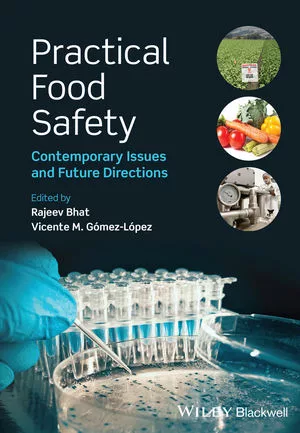Can Food Safety Issues Ever Result in Consensus?

I recently attended a conference seminar entitled “Ground Beef Contaminated with Multi-drug Resistant Salmonella, including S. Typhimurium DT 104: An Emerging Public Health Concern.” My initial reaction was that the theme of the meeting was, unfortunately, very limited, although it heightened focus on the issue of antibiotic resistance, a subject that is fraught with diversity and inconsistencies. The entire resistance debate has gone through a period of intense discussions for more than four decades, and we are still learning by examining the information generated over that period.
The point-counterpoints have been acute over the years, and while there are obvious reasons for concern, we must not approach the problem in an autocratically cavalier fashion. In essence, we have to continue to pursue the available measurement techniques to clarify the relationship between the known risk factors. We must measure not only the occurrence of resistance, but the potential outcome—the occurrence of disease as a result. We must determine the true long-term public health implications from a more comprehensive perspective.
Circumventing the narrow focus of the topic, participants representing a broad spectrum of our food safety professional and scientific community were actively involved in the proceedings and had adequate opportunities to highlight their opinions and concerns about the subject, as well as other facets of food safety in general. Gathering such broad interest was a distinct achievement in itself and is arguably a form of consensus, including the realization that the continued progress in the control of foodborne diseases and the science of food safety itself mandates full participation and involvement of stakeholders typified by those present during the discussions.
The seminar was subdivided by grouping of the presentations to cover the human health, veterinary, regulatory, consumer and industry perspectives. In reality, the subject received the broad coverage that it deserves, and that was a distinct advantage and strength of the meeting. However, the meeting also begs the question: Can food safety issues ever result in consensus? That is difficult to answer because it depends on what consensus entails and what we want to be consensual about.
Nonetheless, by using some of information exchanged in this meeting as a backdrop, I propose to set about considering the answer and how it might be significant to how our industry sets and advances food safety as it pertains to public health objectives.
A Perspective from the Front Row
I got the sense from participants’ comments that many stakeholders feel it is beneficial anytime a group can convene and examine the complexities and nuances of food safety, whether or not it is totally “saturated” with the limited concerns of Salmonella antibiotic resistance and the associated public health pertinence. There was also an underlying message that we do not necessarily have to fully agree, but we do have a collective obligation to be professionally honest, objective, civil and committed to contributing to the long-term goals of a safe food chain.
While being philosophical has benefits, the core direction of the meeting has to be addressed. In his introductory comments, the Dean of the School of Veterinary Medicine of Tufts University, Philip Kosch, clearly set the purpose of coming together by alluding to “the recent outbreaks of Salmonella DT 104 in people in several northeastern states.” He further indicated that the source was ground beef and there is a need to search for the most appropriate public health response to mitigate the challenges linked to the concerns of antibiotic resistance as a result. The use of ground beef as an exemplar was not necessarily unfair, but certainly the problem of antibiotic resistance in general goes way beyond the role of ground beef in the equation.
Apologists can rightly say that we have to start somewhere to attain a semblance of fairness and objectivity. On the other hand, a legitimate counter could be that putting ground beef under the “microscope” is a form of selected bias. Our collective analyses during the symposium may not have been truly representative of the broad relationship between the use of antibiotics in animals and antibiotic resistance in humans. This in no way minimizes the emergence of foodborne diseases linked to Salmonella DT 104 and ground beef. For example, researchers at Johns Hopkins University recently published findings that “eating retail pork products is not the only pathway of exposure for the transfer of antibiotic-resistant bacteria from swine to humans.” The inference is that people could be exposed to antibiotic-resistant bacteria from breathing the air from concentrated swine feeding facilities.
The bottom line is whether there is significant risk from pork, ground beef or exposure to swine feeding operations, and if so, how much of a public health threat really exists. This has been the central focus of the debate for decades. We must now decide—in spite of the benefits of our “community initiative” to analyze fairly and responsibly the nuances of the topics with the utmost professionalism—whether our “measurements” had the precision and validity needed to be conclusive about whether ground beef contaminated with multi-drug resistant Salmonella is truly a national emerging public health dilemma. And, therein lies the true challenge. It is a complicated process that defies ready solutions.
Regardless, there is compelling evidence that we should take the subject of antibiotic resistance seriously. To ignore the significance of it as a public health concern borders on irresponsible. No public can afford that form of indifference. The concern about antibiotic resistance gains support from the convincing accumulative research data indicating an association between the use of antibiotics in animals and antibiotic drug resistance in humans. What we are all compelled to do, nonetheless, is determined by how much of a public health threat we really face because of the linkages.
We can start by examining the concerns expressed by the public health professionals that the problem needs immediate intervention and a planned agenda for resolution. On the other hand, while appreciating the concerns of those responsible for protecting human health, an assessment of the data from the U.S. Department of Agriculture’s Food Safety and Inspection Service (USDA FSIS) demonstrate that 1.6 samples per 1000 of raw ground beef (the worst-case scenario) contain multiple drug resistant S. Newport and S. Typhimurium. This has to be introduced as a legitimate part of the debate about the immediacy of the threat. After all, with limited budgetary resources, we should prioritize our food safety initiatives in the future based on the importance of the risk to the health of the population at large.
Is There An Answer?
Ultimately, industry meetings that assume the responsibility of providing forums for discussing some of the complicated scientific challenges of food safety never seem to achieve consensus—and for good reason. The issues defy easy resolution. The theme of the meeting referenced here, ground beef and antibiotic resistance, is a perfect example. The subject must include other ancillary applications to be complete , such as the judicious use of antibiotics in animals and man; consumer education; the use of progressive sanitation and food safety programs like Hazard Analysis and Critical Control Points (HACCP) at all levels of food production including the farm; industry’s commitments (both producer and processor) to improve safety; and continued funding for research. Importantly, discussions should include ways that all stakeholders in food safety—government, industry, consumers and the academic community—can best work together to limit the perils of antibiotic resistance as a human health hazard and to assure that the nation’s food supply is safe.
Do we really need consensus, or should we focus on continuing to work together but without consensus? Which is more important? I return to the Dean’s welcoming comments: “We have been looking forward to bringing this diverse group of people together from industry, regulatory, private practice, academia, and consumer groups to encourage…a greater understanding of each others’ points of view in order to avoid the pitfall of making a knee-jerk response to a public health challenge. Our hope for an outcome is that the conference will result in new friendships and continued discussions towards consensus on how to go forward.”
I fully concur!
Don A. Franco, DVM, MPH, DACVPM, is president of the Center for Bio-security, Food Safety and Public Health (CBFSPH) based in Lake Worth, FL. Board-certified by the American College of Veterinary Preventive Medicine, Franco spent most of his professional career with the USDA FSIS most recently as Director of Slaughter Operations in Washington, DC, from which position he retired in 1992.
Looking for quick answers on food safety topics?
Try Ask FSM, our new smart AI search tool.
Ask FSM →








